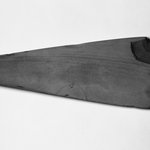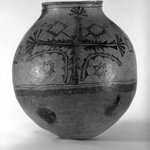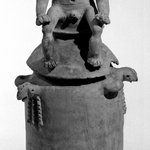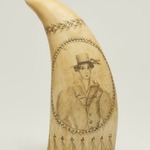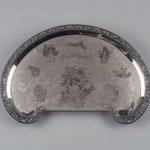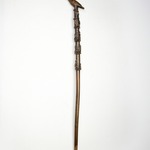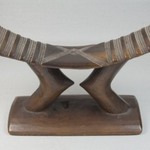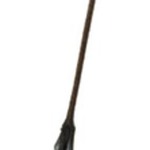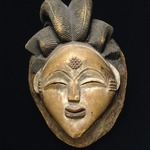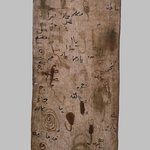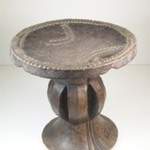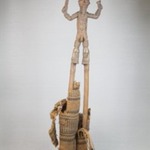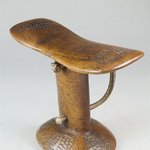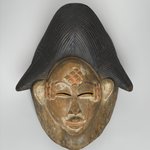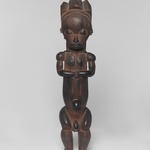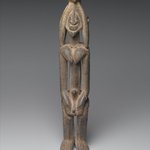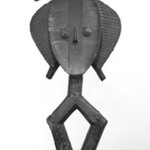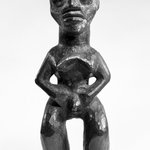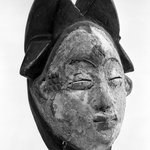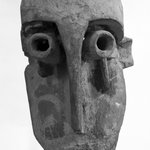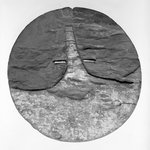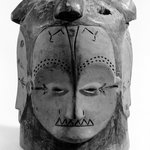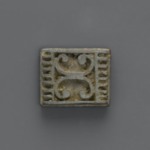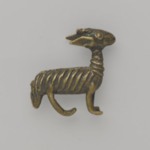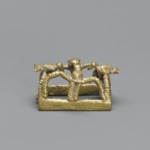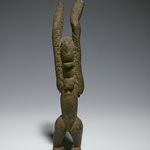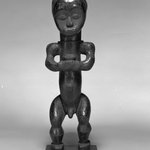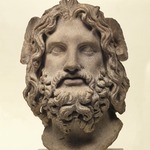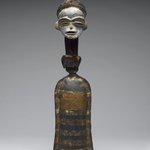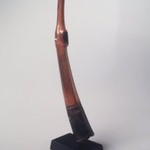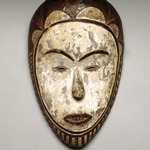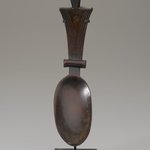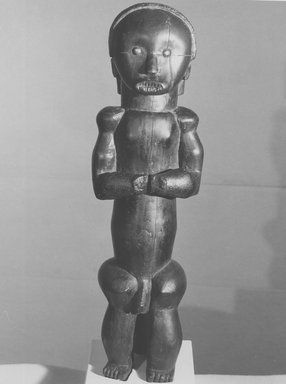

Ntumu Fang. Reliquary Guardian Figure (Eyema Bieri), late 19th or early 20th century. Wood, applied materials, oil, copper alloy, 20 1/16 x 5 1/2 x 5 1/4in. (51 x 14 x 13.3cm). Brooklyn Museum, Gift of Arturo and Paul Peralta-Ramos, 56.6.100. Creative Commons-BY (Photo: Brooklyn Museum, CUR.56.6.100_print_front_bw.jpg)
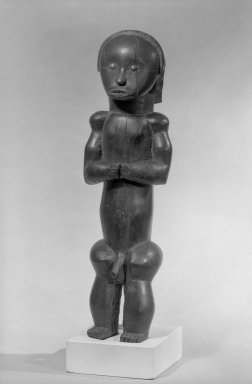
Ntumu Fang. Reliquary Guardian Figure (Eyema Bieri), late 19th or early 20th century. Wood, applied materials, oil, copper alloy, 20 1/16 x 5 1/2 x 5 1/4in. (51 x 14 x 13.3cm). Brooklyn Museum, Gift of Arturo and Paul Peralta-Ramos, 56.6.100. Creative Commons-BY (Photo: Brooklyn Museum, 56.6.100_acetate_bw.jpg)
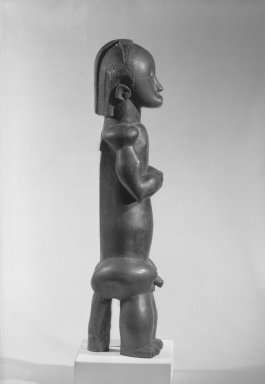
Ntumu Fang. Reliquary Guardian Figure (Eyema Bieri), late 19th or early 20th century. Wood, applied materials, oil, copper alloy, 20 1/16 x 5 1/2 x 5 1/4in. (51 x 14 x 13.3cm). Brooklyn Museum, Gift of Arturo and Paul Peralta-Ramos, 56.6.100. Creative Commons-BY (Photo: Brooklyn Museum, 56.6.100_side_acetate_bw.jpg)

Ntumu Fang. Reliquary Guardian Figure (Eyema Bieri), late 19th or early 20th century. Wood, applied materials, oil, copper alloy, 20 1/16 x 5 1/2 x 5 1/4in. (51 x 14 x 13.3cm). Brooklyn Museum, Gift of Arturo and Paul Peralta-Ramos, 56.6.100. Creative Commons-BY (Photo: Brooklyn Museum, CUR.56.6.100_print_detail_bw.jpg)
Reliquary Guardian Figure (Eyema Bieri)
Arts of Africa
These five artworks from throughout Africa display the range of approaches artists have taken to figural representation. They prove that the Western tradition of naturalism—depicting the body precisely as observed in life—is not even remotely the only possibility open to an artist.
The Mossi mask celebrates the female form. While it is not an exact replica of the body, the proportions are relatively balanced.
The Yoruba tapper, used with a board to draw images during divinations, was carved with more exaggerated proportions, owing to both the shape of the ivory from which it was carved and the functional requirements of the object.
The Fang figure has primarily been reduced to a series of cylinders and circles. The legs and hips are conceived as the intersection of two perpendicular cylinders, echoing the cylindrical reliquary box on which the figure sat.
The small Nsapo-Nsapo work and the Salampasu figure take the abstraction of the human form even further by greatly exaggerating the proportions. The Nsapo-Nsapo figure’s thin, extended arms and the Salampasu sculpture’s outthrust chest and flexed shoulders suggest different emotional states for these two protective figures—a tense anxiety, perhaps, in one and a tense readiness in the other.

